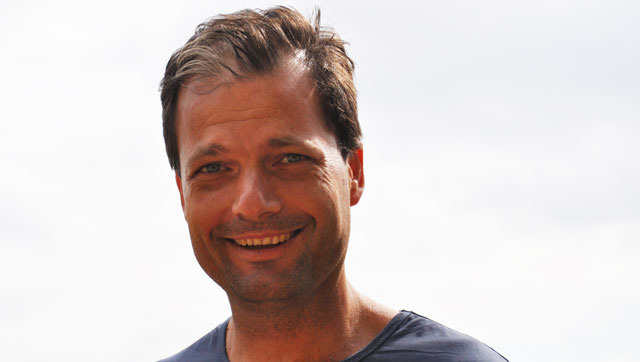
The launch of the Tshwane Municipality’s online wayleaves management system should be welcomed — and emulated — by other local authorities in South Africa.
The processes involved in securing permission and the associated bureaucratic bottlenecks have long been a bugbear of bigger companies such as Dark Fibre Africa and FibreCo, but also of many other smaller local contractors who specialise in laying fibre-optic cables in and around our towns and cities.
The complicated processes are evident in some of the fibre backbone maps that show that fibre simply bypasses some towns that could otherwise have been connected.
The department of communications’ draft broadband policy document mentions that there has been a proliferation of network initiatives in different provinces, metros and municipalities and that some of these are successful.
The document notes that Dark Fibre Africa has already built nearly 8 000km of metro ducts and fibre in all major metros and a number of secondary cities. It provides this unlit fibre (“dark”) infrastructure on an open-access basis.
But, as the draft policy notes, there are undesirable unintended consequences, especially the proliferation of uncoordinated projects resulting in the duplication of effort and networks. There are also conflicts between municipalities with vested interests in their own projects, leading to the shutting out of normal private-sector infrastructure investment. What is not mentioned in the draft broadband policy is that local governments in South Africa are often entirely dysfunctional.
The draft document’s proposed solution is that the provision of broadband infrastructure be coordinated by the Presidential Infrastructure Coordinating Commission’s Strategic Integrated Project (Sip) 15: “Expanding Access to Communication Technology”. Sip 15 emphasises the need for “coordination and integration of communications infrastructure activities within state-owned enterprises, private entities, provinces and local government”.
The draft policy document makes an interesting observation: neither the Telkom nor Broadband Infraco networks are available on an open-access basis, but private-sector projects have elements of open access. Ironically, then, privately funded projects have more characteristics of being a public service than publicly funded operations.
It is here where the draft broadband policy document is weaker. Although it gives a good overview of the current state of broadband readiness, identifies the necessary role players and how their efforts should be co-ordinated, and recognises the need for market-based solutions, it is not as strong when it comes to exactly how all this should be done.
Perhaps the problem is that the traditional telecoms company model, with vertical orientation from the end user right down to the physical backbone infrastructure layer, provides the guide for analysis. This is how traditional telecoms operators still see themselves. Instead, we should understand the whole ecosystem as horizontal layers, such as described by the TCP/IP model, and regulate each layer differently. So, Dark Fibre Africa is not even a telecoms operator, in the way that a toll road construction company is not part of the automotive industry. It is by definition open access.
Broadband Infraco and others are different. They lease “lit” capacity on existing fibre. Given that roughly 80% of the cost of laying a cable is the civil works — trenching, essentially — it is important to secure a positive return for laying fibre. Avoiding duplicate lines goes a long way to avoiding this.
Very rapidly, significant parts of the South African telecoms network are being built and are owned by entities other than the traditional telecoms providers. The incumbents already have fully “vertically integrated” networks that may use selected parts of the infrastructure of the independents as it suits them and to meet their own requirements. The key therefore is to reduce capital expenditure as much as possible, and this is best done by sealing partnerships (network sharing) that allow greater focus on fibre roll-out to specific locations. It is here where a different type of regulatory intervention could occur.
At present, there is little coordination between the owners of fibre-optic networks – and particularly the negotiation of transit via the networks of other operators. As such, different fibre networks with their huge carrying capacities are laid in parallel, serving different customers that are often co-located in the same premises or at least very close together. Transit rights and negotiations are often based on price per megabit, which does not speak to the question of simple utilisation or yields that should govern these negotiations. The result is over-investment in some areas (reducing yields) and no investment in other areas that would otherwise justify a single fibre carrier.
One possible solution would be the imposition by local authorities of a standardised “lit fibre clearing house”. This would lead to the creation of a specialist clearing house agency that would invite all owners of fibre infrastructure to provide details of their excess (existing and future) capacity with a central clearing house that, in turn, could bundle what is made available to any telecoms operator.
The clearing house would be able to bundle international, regional and local capacity based on a predetermined policy. This would have useful consequences for those laying fibre. Firstly, they would be able to offer services to customers where they do not have fibre (but where others do) and, secondly, they would increase their own network in areas where they already, for example, have town planning permission based on the expectation that someone would be able to sell it to customers in that area.
Just as local-loop unbundling, if done properly, could reinvigorate Telkom’s last-mile copper infrastructure, the same “must share” principles could spur access to fibre capacity that lies under our public roads and pavements.
- Dirk de Vos is a consultant in renewable energy and telecommunications
- Read more columns by De Vos




